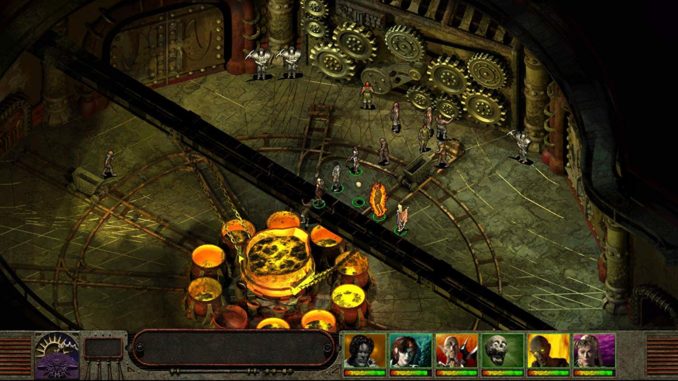

Ask anybody who has played Dungeons and Dragons before, and they’ll tell you that there’s no feeling quite as satisfying as rolling a natural 20 and obliterating a monster where they stand. The beauty of the Tabletop RPG is in the freedom it allows the player. You can be anything you want to be. And much to the dismay of Paladins everywhere; do anything you want to do.
It’s a creative outlet like no other.
Unfortunately, it isn’t easily accessible. Finding the time to get a bunch of friends together on a regular basis is not an easy task. You could always play via Teamspeak or Discord, but some of the magic is lost when the game isn’t in person. That’s where Planescape: Torment and Icewind Dale: Enhanced Editions serves its purpose.
For those die-hard dice-rollers who need their fix of D&D but don’t have the time to form a party, it’s a wonderful alternative. The developer; Black Isle Entertainment, is better known for the creation of a little-known series called Fallout. Most people know the series as a First-Person RPG-Shooter, but originally it was an Isometric Point-and-Click RPG. And if you played the original Fallout, you can tell it was made by the same people.
The game shows its age. The character models aren’t particularly detailed, the animations are janky, and the voice acting is hokey. However, that’s also part of the game’s charm. Part of the fun of the Fallout series is how hilarious the bugs can be. Despite the rendered graphics not holding up— the character portraits are gorgeous. Each one feels unique and is highly detailed. They breathe life into the characters in a way that technology wouldn’t normally allow in 1996.
The gameplay is clunky. It was clearly developed with a keyboard and mouse in mind. And it affects the experience quite a bit at first. Menus are confusing to navigate, the cursor is flighty, and managing an entire party with the limited scope of a Dualshock Four is a chore. It would be understandable if someone stopped playing specifically because of the controls.
Planescape: Torment and Icewind Dale aren’t exactly faithful translations from a tabletop to a videogame, either. Combat scenarios in D&D are methodical, turn-based altercations that require at least some thought to survive. And the aforementioned dice-rolls are a key source of gratification that keeps the player addicted. These games ditch the rolls for traditional point-and-click combat, and it does the series a disservice. Encounters feel more like a chore thanks to the abrasive controls than they do a source of enjoyment. Battles usually boil down to the same strategy. Let the Paladin tank the hits, let the Barbarian smash stuff, and keep the Healer as far away from the action as possible. It’s a shame that the Fire Emblem series didn’t come to the west until 2003 because the chess-esque combat is much closer to traditional Dungeons and Dragons.
However, the character creator is excellent. Though it would be impossible to allow the player as much freedom as pen and paper, there are enough options to tailor-make a character to the specifications you want. D&D purists can sink their teeth into the stat system just as deeply as they would with the traditional game.
The campaigns are serviceable. They provide a driving force for your party’s quest and set you off on your merry way. They’re no revelation in story-telling but they get the job done. Although there are some unique set pieces sprinkled in every once in a while to provide a breath of fresh air.
Could any random person pick up these games and fall in love with them? Most likely, no. But these games aren’t made for random people. They’re clearly created with the intention of providing a more accessible experience to those die-hard diceheads who find it hard to coordinate a party with their friends. And to that end, it does so with moderate success. It’s just a shame that the combat is so tedious. With a more intuitive menu system and a faithful recreation of traditional D&D battle systems, the game would be nearly flawless.
The Good:Â
In-depth character creation: Easily the best part of the game, the character creator is a faithful representation of what it’s like to roll up a new one at the start of a campaign…or when yours died after rolling a one on a saving throw.
The Bad:
Clunky controls: The menu system and in-game cursor were clearly designed with a keyboard and mouse in mind.
No representation of dice rolls: Absolutely nothing will come close to the feeling of flaying a baddie after rolling a nat 20. While there is an RNG element to the combat, it’s all on the back end of the game.
Final Thoughts:
Planescape: Torment and Icewind Dale: Definitive Editions were created with a niche audience in mind. And that niche audience could sink hours into it in one session. Unfortunately, most other people probably won’t get the same level of enjoyment.


Leave a Reply